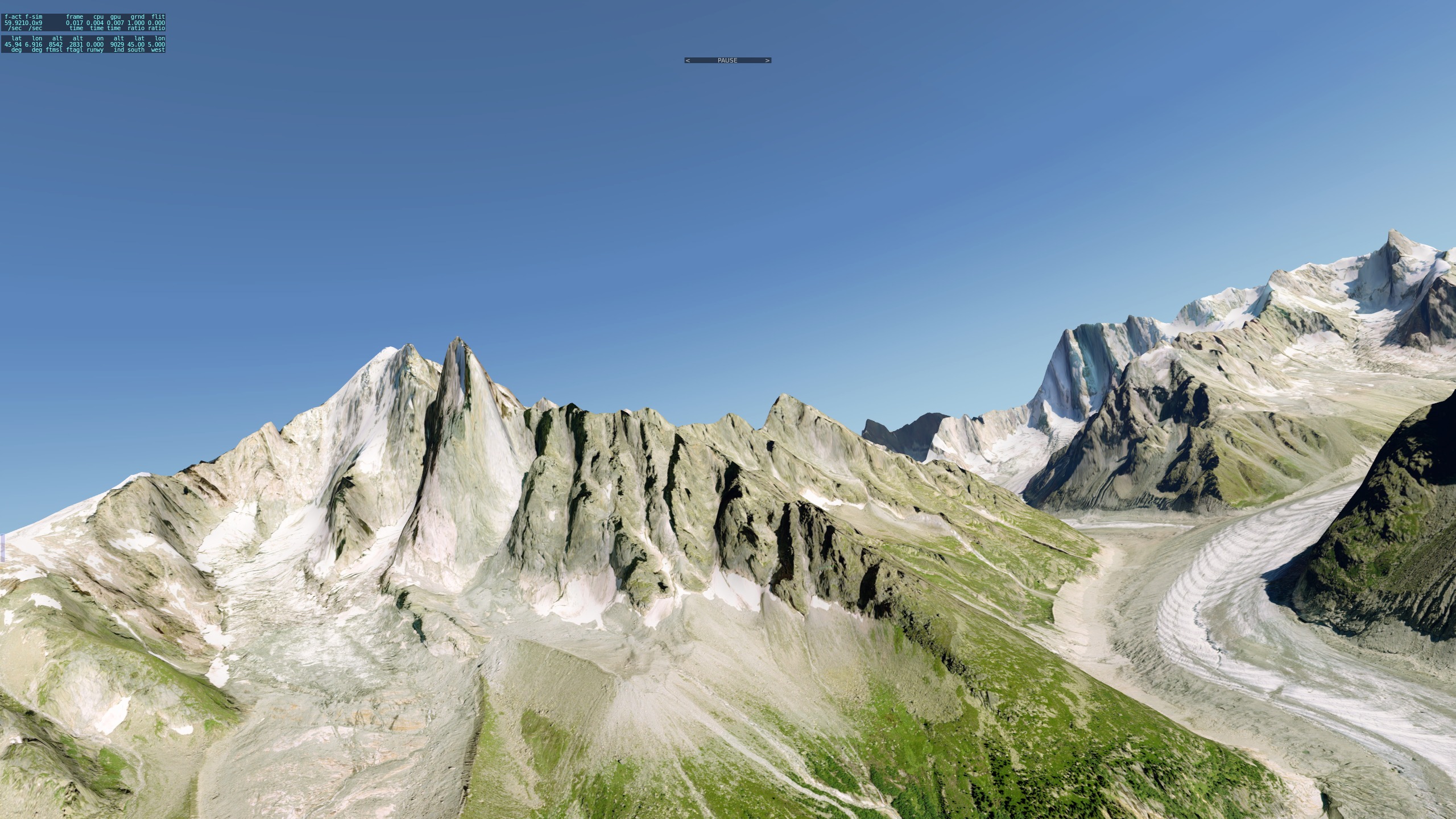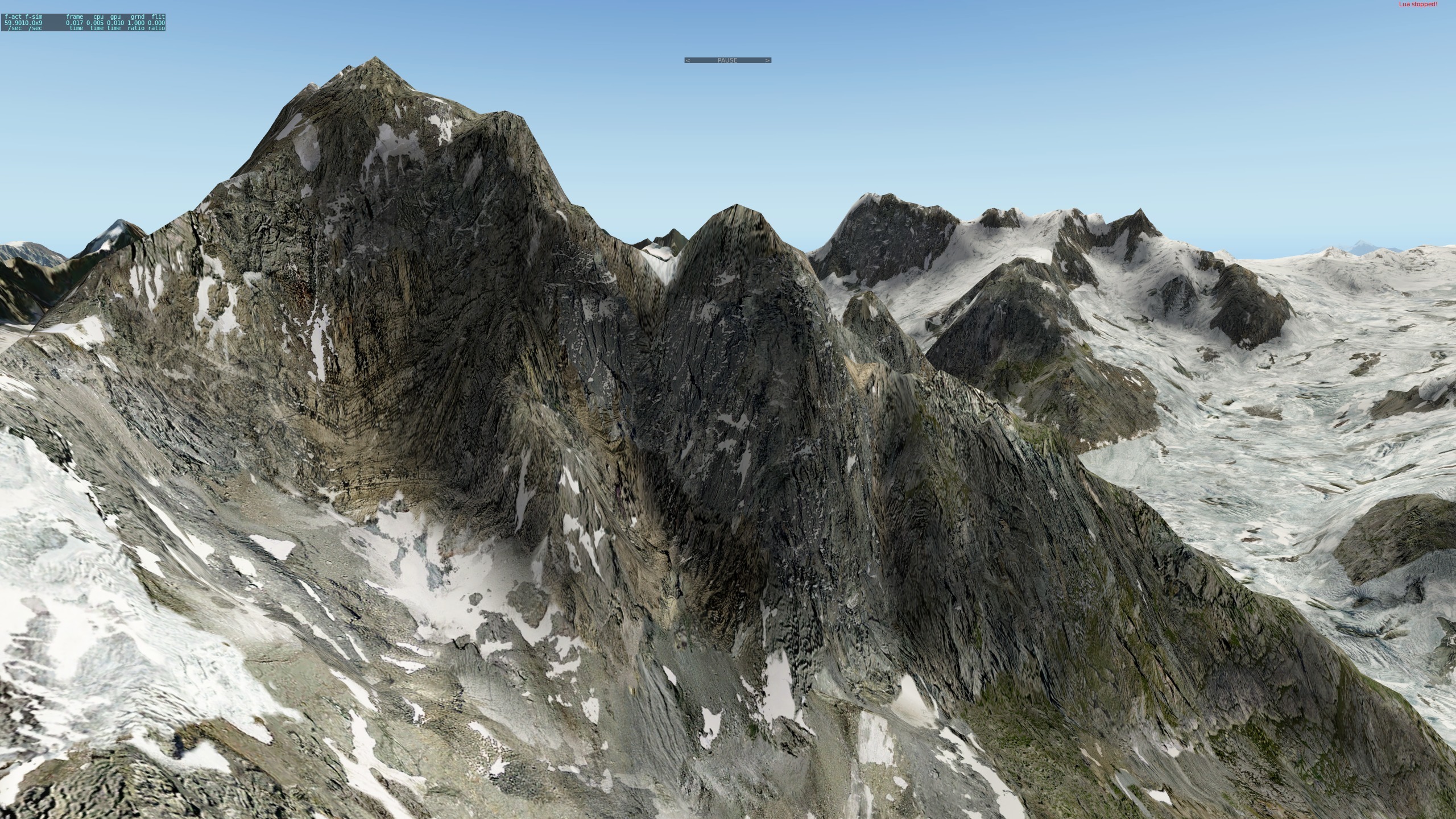
UHDv1 : (Les Drus are back)

Ortho4XP : (here too, even though the view point is farther (a closer and different viewpoint at the bottom of this page))

Meshtool, as its name indicate, is a tool provided by Laminar Research/Ben Supnik for mesh generation for the X-Plane flight simulator.
Ortho4XP is a tool to build orthophoto based sceneries for the X-Plane flight simulator, it contains its own mesh generation algorithm.
Both Meshtool and Ortho4XP are open source softwares, Meshtool has an MIT Licence and Ortho4XP is GPL v3.
Meshtool relies on the Computational Geometry Algorithms Library (CGAL),
and is based on a worst point pick
type greedy algorithm.
Ortho4XP relies on the Triangle C routine of Jonathan Shewchuk,
a A Two-Dimensional Quality Mesh Generator and Delaunay Triangulator
. The latter is so flexible
that it was easily adapted into a 3D meshing tool for X-Plane.
The following facts and visuals aim at a side by side comparison of both tools. The key point to look at here is the mesh (edge details, small peaks, etc), NOT the textures, since the latter (landclass based vs orthophoto based) is more a matter of personal taste and has nothing to do with mesh quality. The meshing part of Ortho4XP could in principle be used as well as a basis for landclass sceneries, following J. Shewchuk's licence as well as GPL v3 is the only limitation.
Last but not least, a mesh generator, however efficient it is, cannot produce a good mesh from poor input data. In the tests with Ortho4XP and, I believe, in those presented below for Meshtool, the SRTM 1" arc with void filled (and perhaps other improvement steps) by Jonathan de Ferranti was used.
Mesh generation is mostly difficult in the mountainous regions, not in flat grounds. The tile +45+006 (Chamonix Mont-Blanc) has been used for that purpose.
X-Plane comes with a so-called Global Scenery, which covers the (almost) whole planet and has a triangle count (roughly 500.000 per tile) which is probably two low to be fairly compared here. Many users prefer instead the higher density meshes which are produced by Alpilotx using Meshtool (in addition to a heavy and impressive work of Openstreetmap data crunching). The latter comes in two flavors, the HD (roughly 2.5 million triangles per tile) and UDH ones (roughly 6 millions triangles per tile). Ortho4XP has a number of parameters to control the mesh complexity, the most important of which, called curvature_tol, aims at controlling the mesh density as a function of the local curvature of the terrain. In the following tests, it has been chosen to obtain a triangle count similar to the HDv3 mesh (2.5 million triangles). Triangle counts up to 25 millions triangles have been produced, but this is certainly an overkill both for the DEM input file and for X-Plane (DSFTool produces an error).
Summary of DSF sizes :
| Mesh type | Number of triangles | File size of the DSF* |
|---|---|---|
| HDv3 | 2.5 millions | 75Mb |
| UHDv1 | 6 millions | 187Mb |
| Ortho4XP | 2.5 millions | 31Mb |
The triangulation part of the DSF generation for Ortho4XP took 3sec472 on an i7 4790K. VRAM use is a bit less than 500Mb with "Very High" texture setting and HDR off, and a bit more than 1Gb with "Extreme" textures and HDR on (Windows with Nvidia card, Linux driver seems to ask for slightly more VRAM).
Notice :Image size is reduced on the front page for readability, one can right-click an image and select "view image" to access its full size version.
First test : Les Drus.
HDv3 : (Les Drus is Le Dru here, since Petit Dru and Grand Dru are merged)

UHDv1 : (Les Drus are back)

Ortho4XP : (here too, even though the view point is farther (a closer and different viewpoint at the bottom of this page))

HDv3 :
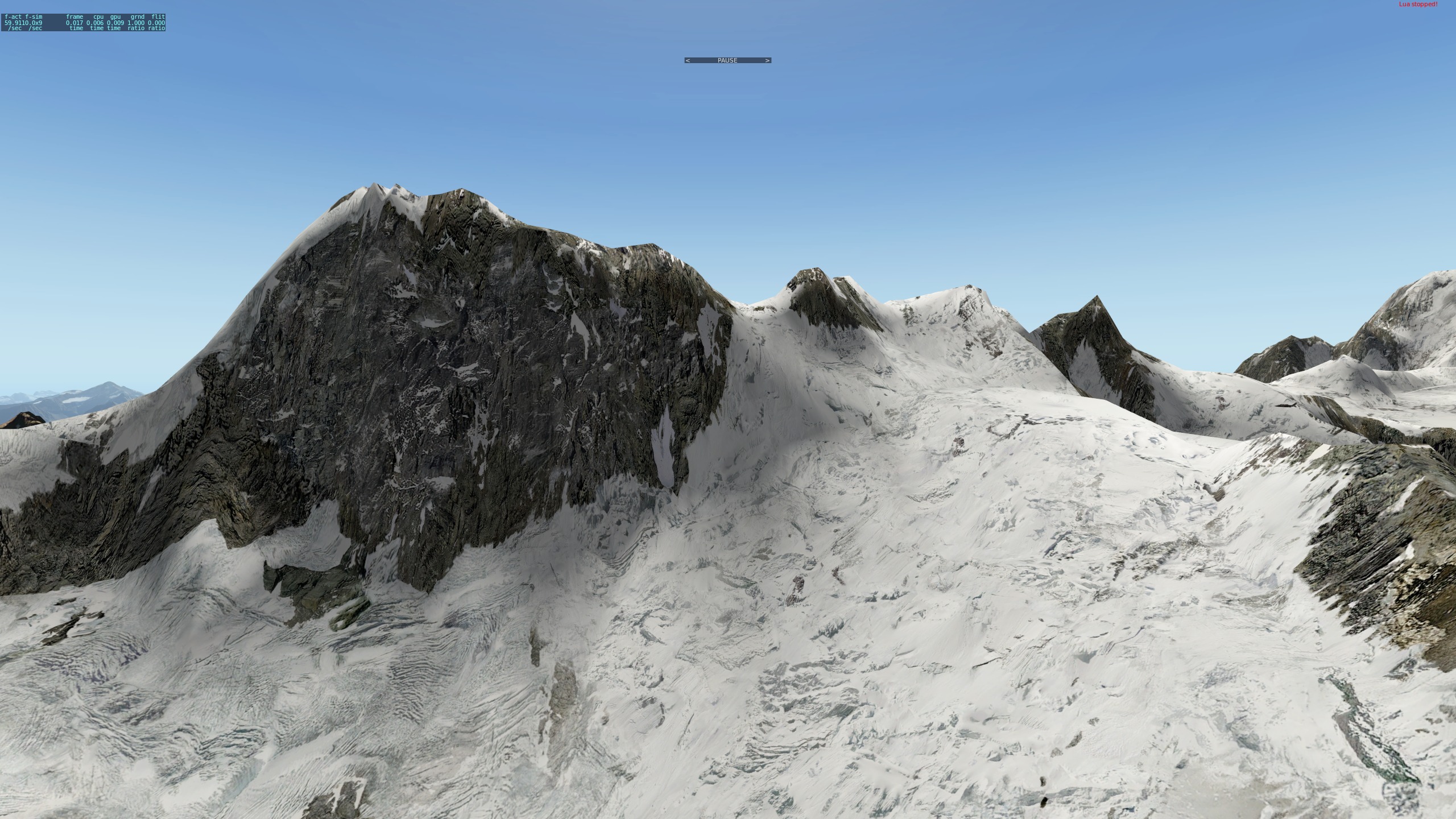
UHDv1 :
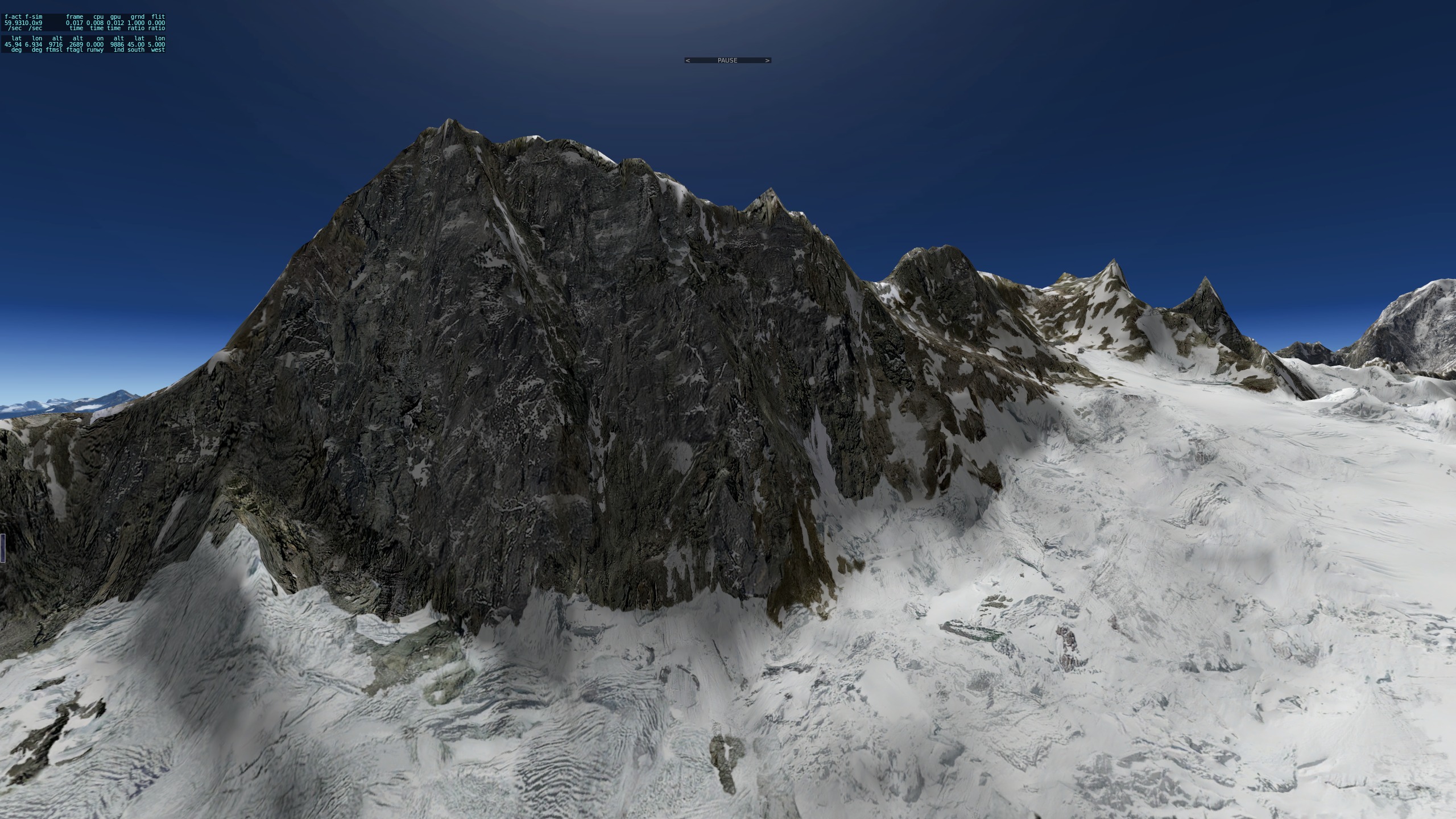
Ortho4XP :
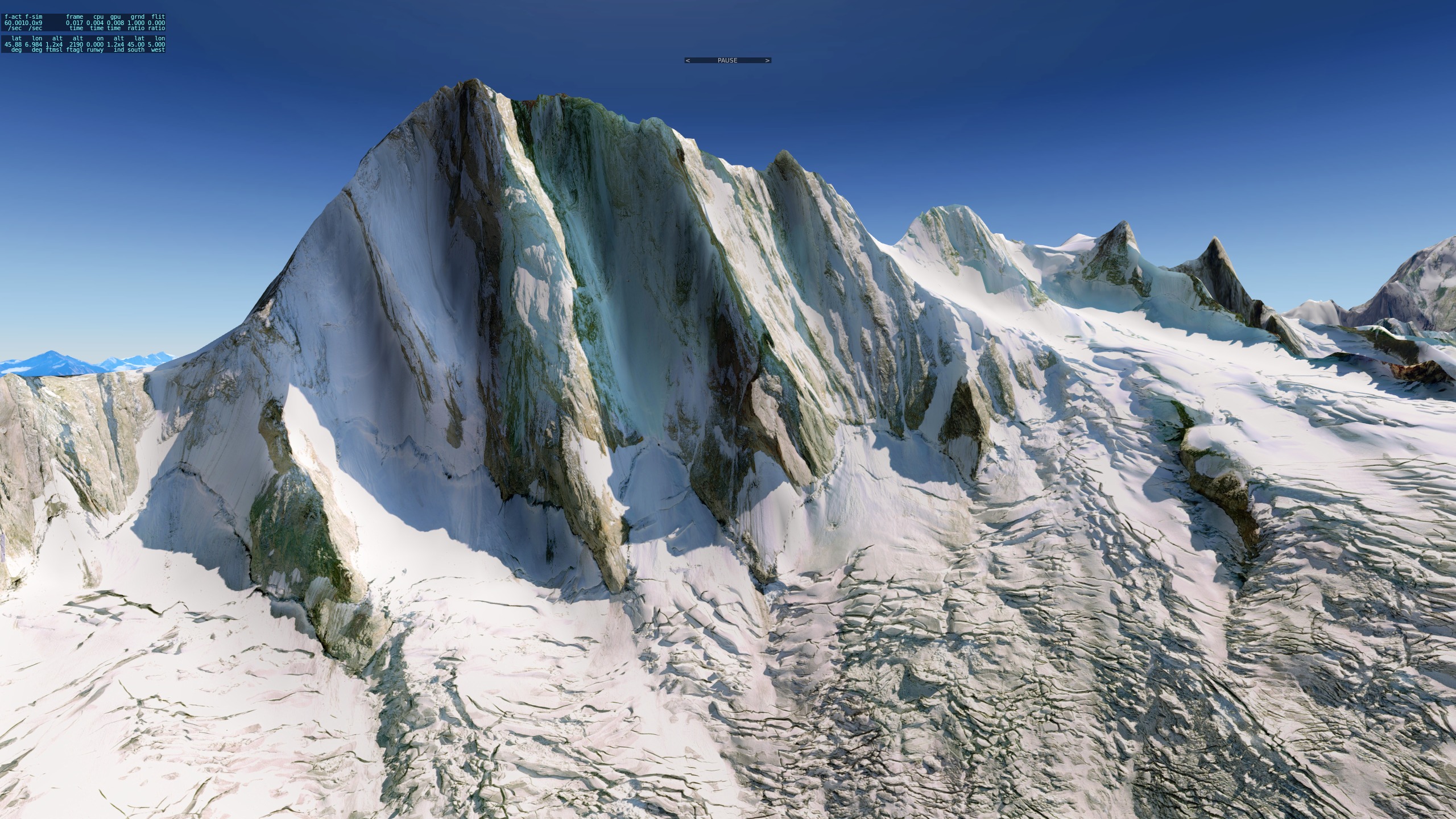
Third test : Aiguille du grand Capucin.
HDv3 : (it is actually not there)

UHDv1 :

Ortho4XP :
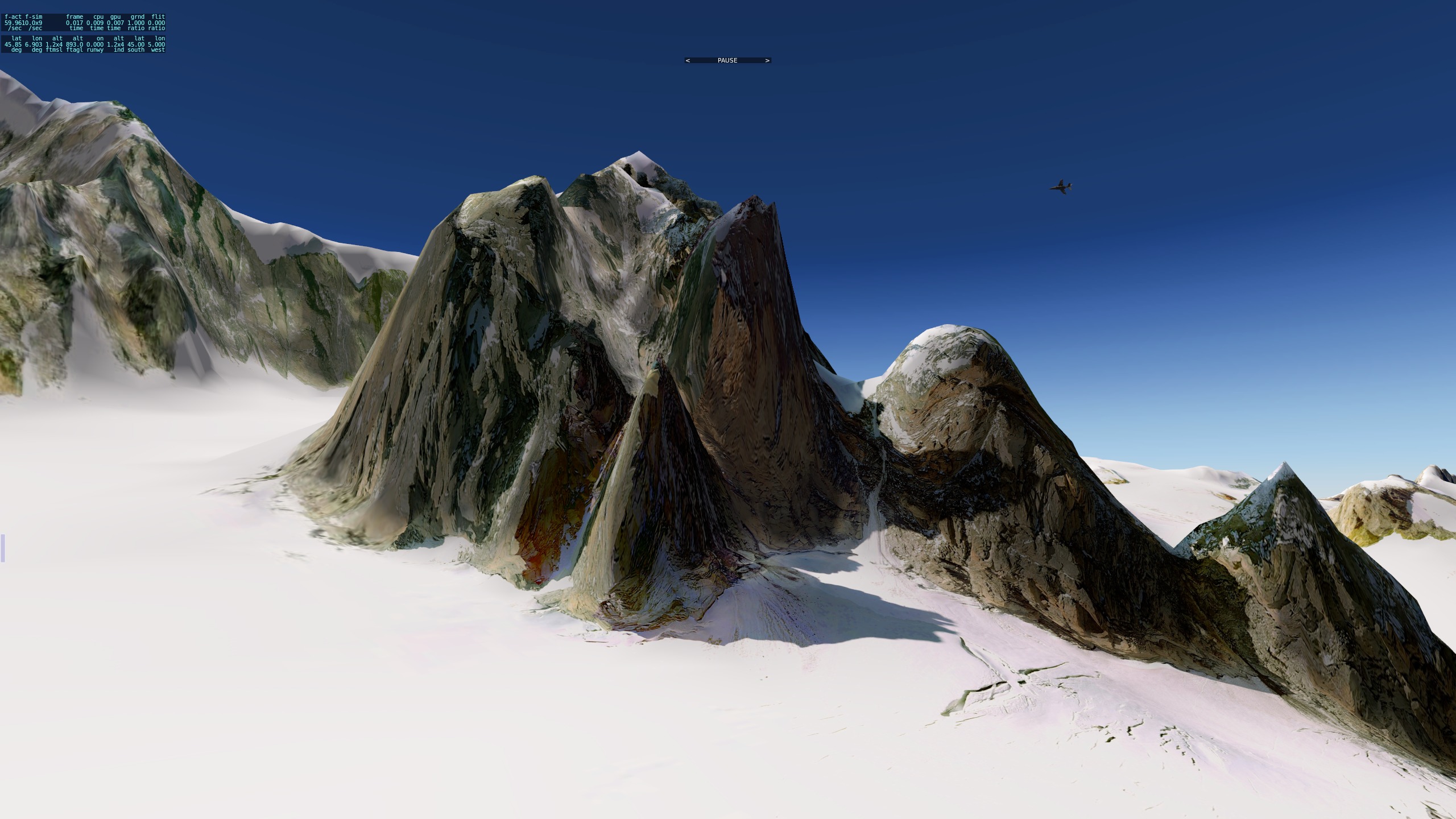
Fourth test : Aiguille du géant. (HDv3 was omitted)
UHDv1 :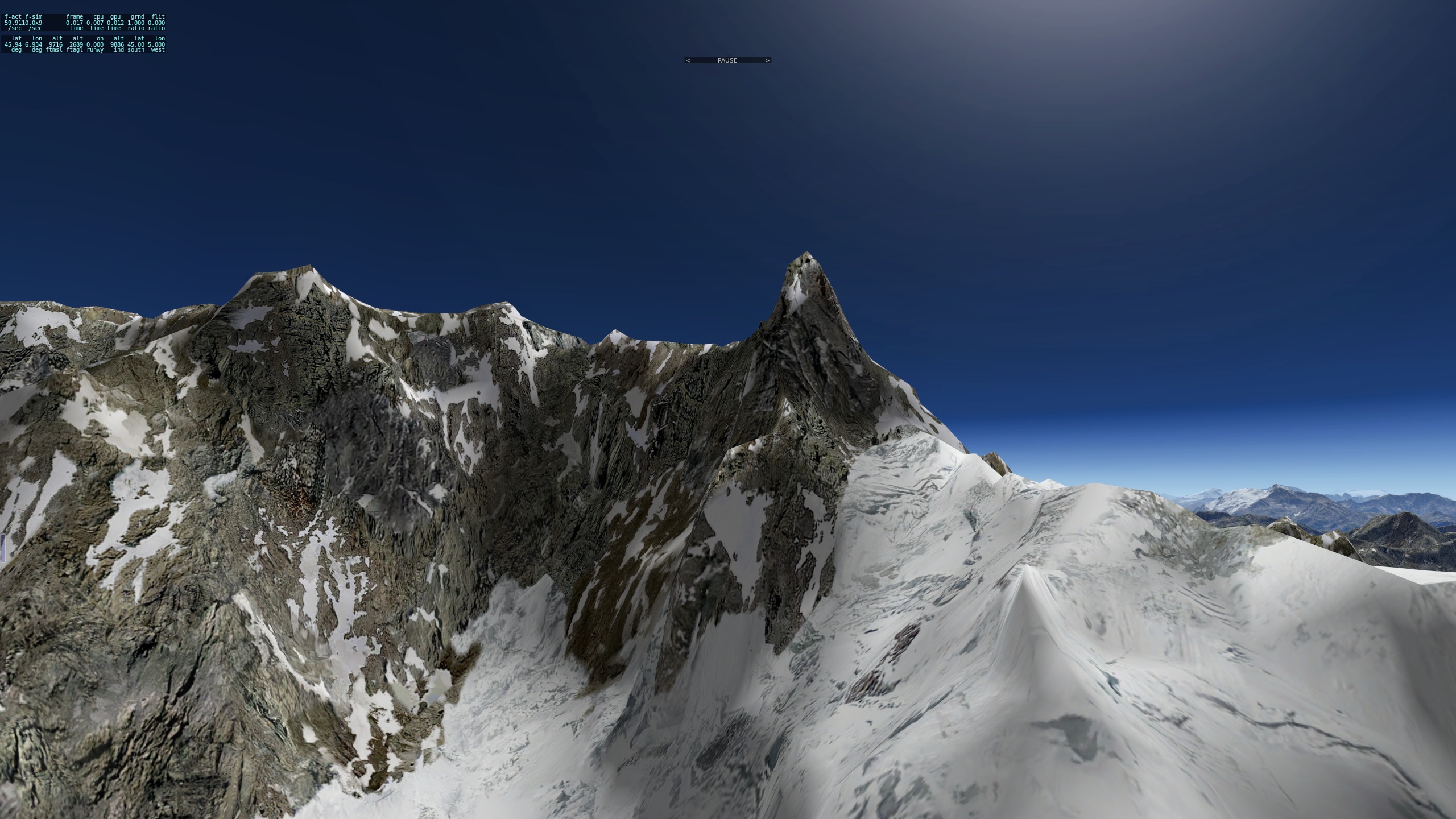
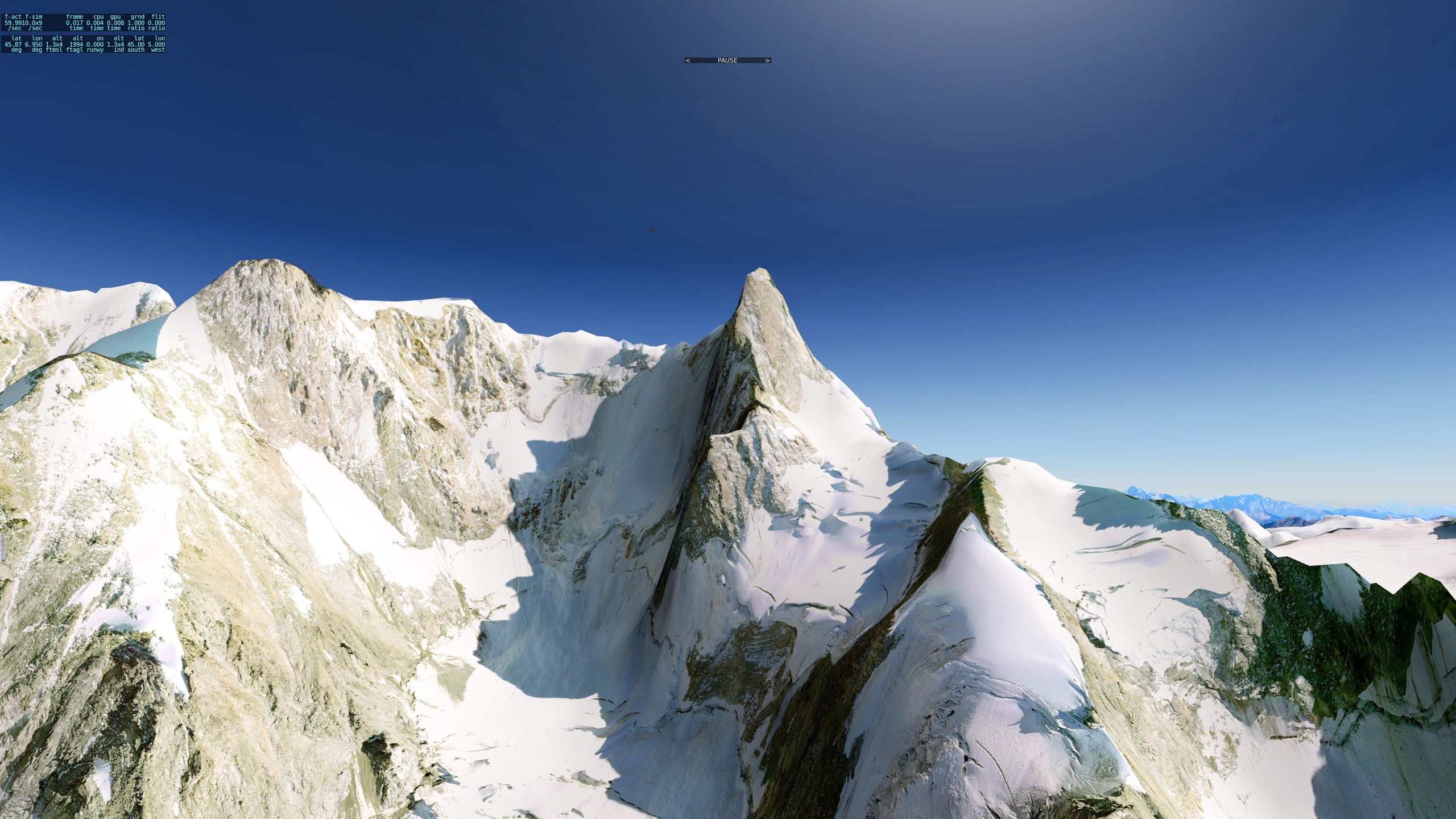
Additional Ortho4XP test images :
Les Drus (left) viewed from La Charpoua :
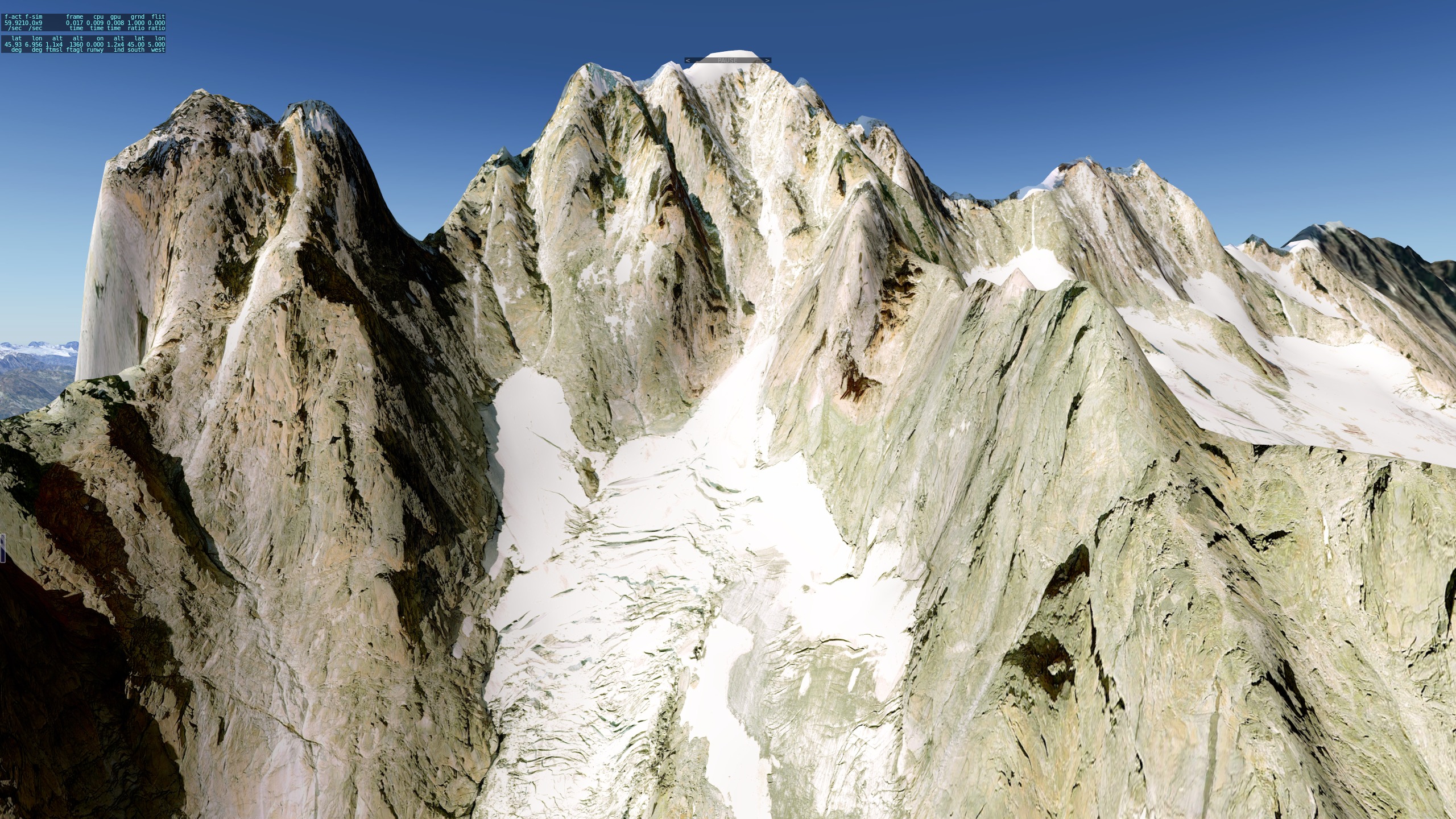
North face of Les Droites :

Most well-known view of Les Drus west face :
